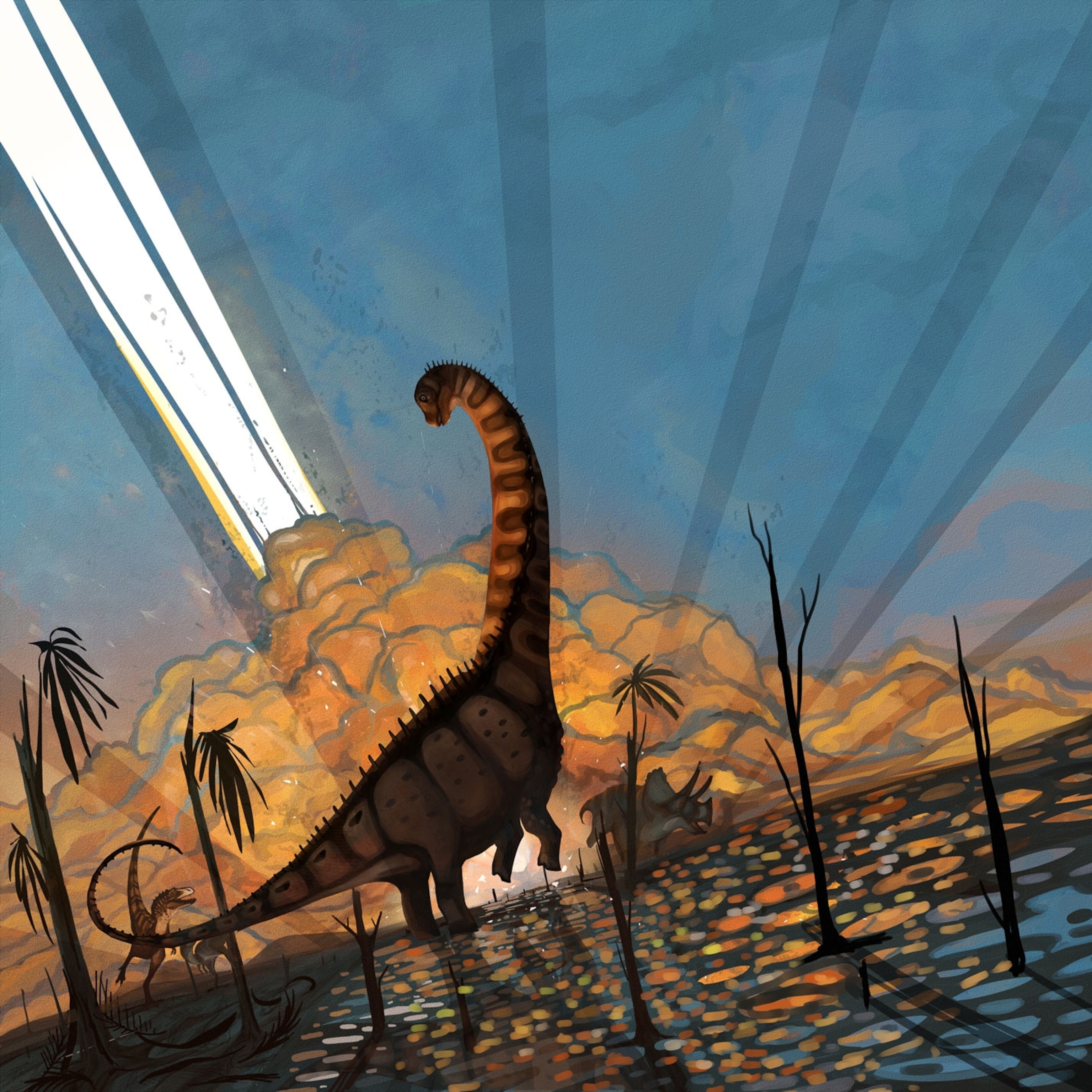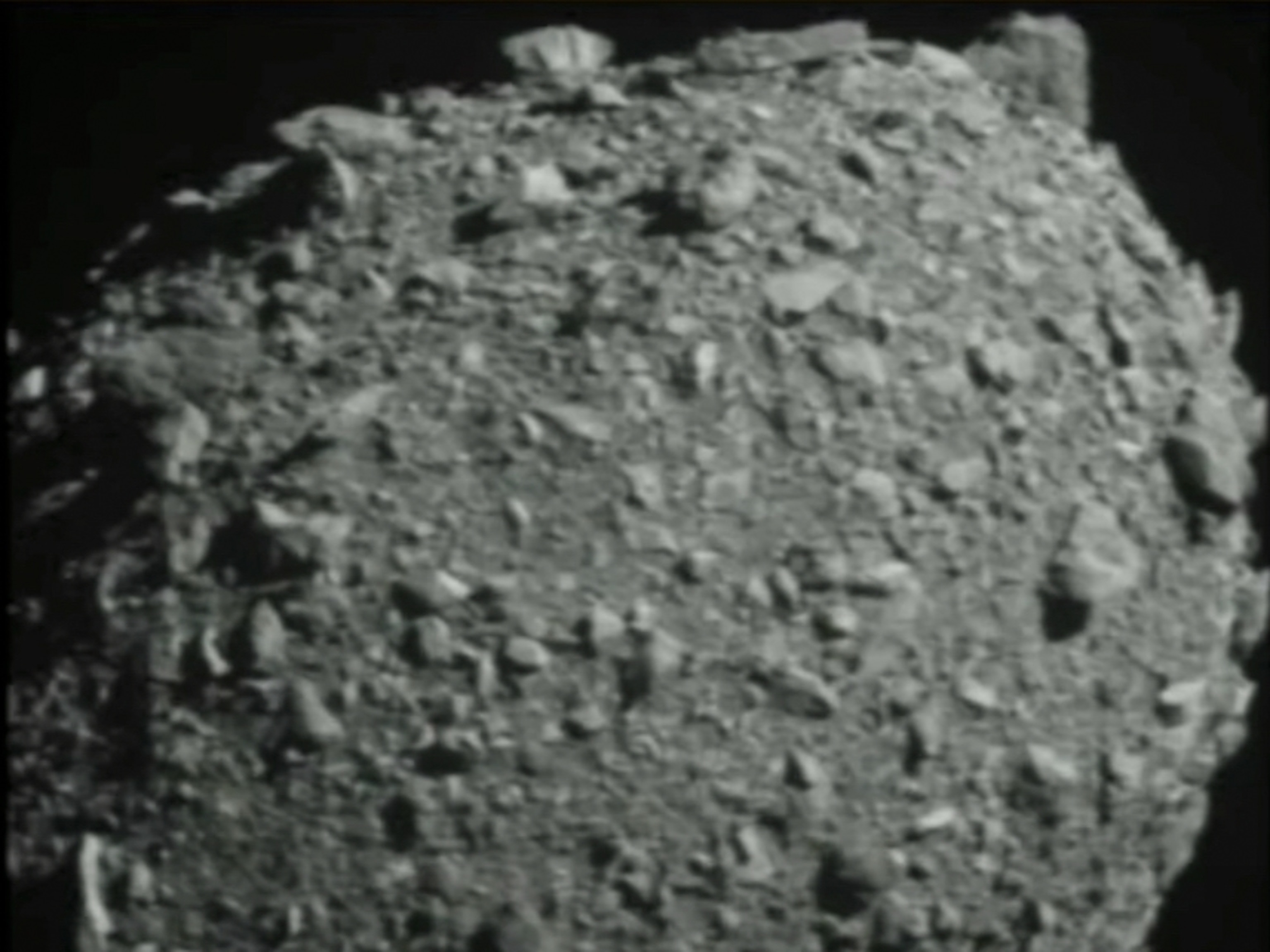An enormous asteroid—big enough to leave a six-mile-wide crater and darken the world with dust if it hit Earth—will harmlessly zip by our planet on April 29. The object, called 1998 OR2, is at least a mile wide, and while it poses no threat, it will pass within four million miles of our planet—close enough to be classified by NASA as “potentially hazardous,” because it will continue to make close passes to Earth in the future as both objects orbit the sun.
“It’s just a whopping big asteroid,” says Amy Mainzer of the University of Arizona, one of the planet’s leading scientists in asteroid detection and planetary defense. “It’s smaller than the thing thought to have caused the extinction of the dinosaurs, but it is easily capable of causing a lot of damage.”
An asteroid passing relatively close to Earth is more common than most people realize. Every year, dozens of asteroids that are big enough to cause regional devastation pass within five million miles of Earth—the cutoff for potentially hazardous asteroids. On average, one or two space rocks large enough to cataclysmically impact a continent pass by each year.
Earth will almost certainly confront a space rock large enough to obliterate a city, or worse, at some point in its future. If humans are still around when that day comes, it would be prudent to have a plan for protecting the planet. That’s why NASA is launching a spacecraft next year to conduct the first test of one promising strategy for stopping a killer asteroid: Hit it while it’s still far enough way to alter its course.
The Double Asteroid Redirection Test (DART) will slam a spacecraft into the smaller of two asteroids orbiting each other. Any change in the smaller object’s orbit will be easy to measure from Earth and will provide a good indicator of whether it has been successfully deflected.
“It’s an exciting time,” says Ed Lu, a retired NASA astronaut and founder of the B612 Foundation, a nonprofit devoted to asteroid detection and deflection. “I think DART’s going to be a tremendous demonstration.”
The crowded solar system
The first step to stopping a killer asteroid is finding it. “There are literally hundreds of thousands of asteroids out there, and we want to separate out those we should keep a closer watch on and monitor over time,” says Lindley Johnson, NASA’s planetary defense officer. So far, he says, there are 2,078 potentially hazardous asteroids in the catalog.

Traveling at nearly 20,000 miles an hour, 1998 OR2 will pass within four million miles of our planet this week, or roughly 16 times farther than the moon. While this distance is no cause for concern, 1998 OR2 will continue on its 3.7-year orbit around the sun, venturing into the asteroid belt beyond Mars and circling back inside Earth’s orbit with each lap. On its next approach to our planet in 2078, it will be much closer, swinging within about a million miles of Earth. After a few hundred years, astronomers can’t calculate exactly where 1998 OR2 will be.
NASA classifies anything over 140 meters (about 459 feet) wide that passes within five million miles of Earth as a potentially hazardous asteroid. “Five million miles comes from how much orbits can change over time, and a little bit of a margin put on it, of course, to be sure that we capture anything that might be a potential impact hazard in the future,” Johnson says.
In just seven years, another huge asteroid called 1990 MU, nearly two miles wide, will pass within three million miles of Earth.
“We don’t want to get hit by something that big,” Johnson says. “Our most important task is finding them and getting a fuller catalog of everything that’s out there, so we don’t get surprised.”
In 1998, the U.S. Congress directed NASA to detect and characterize at least 90 percent of potentially hazardous asteroids measuring one kilometer (about 3,200 feet) across or larger. Seven years later, the space agency was directed to find 90 percent of nearby asteroids that are 500 feet wide or larger.
The bigger asteroids, including 1998 OR2 and 1990 MU, could devastate life across the planet if they hit. “It is estimated that asteroids of one kilometer or more would result in continent-wide devastation, and the dust injected into the atmosphere would cause drastic cooling and the possibility of global crop failures for at least a few years,” says Jay Melosh, a geophysicist at Purdue University.
We’ve found roughly 900 of these larger objects, or 95 percent of the estimated total population. None are even remotely likely to hit the planet in the next several centuries. But of the smaller group, which could still destroy cities, we’ve only detected roughly 30 percent of the estimated 25,000 objects, according to a report from the National Science and Technology Council.
“These smaller ones—the sub-global sizes that are capable of causing regional problems—we still have a lot of work to do,” Mainzer says. “Searching for these gray or black rocks against the blackness of space—it’s just a hard problem.”
Even space rocks smaller than 500 feet wide can be extremely dangerous. Some meteors explode in the sky with the strength of nuclear bombs, such as one that burst over Chelyabinsk, Russia, in 2013. At only 66 feet wide, this fireball meteor caused a shock wave that hit the city, shattering glass and resulting in about 1,500 injuries. No one saw it coming.
Hit it with DART
When it comes to stopping an asteroid from colliding with Earth, warning time is the name of the game. With years or even decades to prepare, humans could nudge even the largest asteroids off course.
NASA’s DART mission, scheduled for launch in July 2021, will test one strategy by slamming a half-ton spacecraft built by the Johns Hopkins Applied Physics Laboratory (APL) into an approaching asteroid. In October 2022, about seven million miles from Earth, the refrigerator-size spacecraft will approach a half-mile-wide asteroid called Didymos, which is orbited by a 500-foot-wide moon.
“Didymoon,” as the smaller body is affectionately called, is DART’s target. It’s roughly the size of asteroids that can obliterate cities. Ground-based telescopes will be able to detect changes in the duration of its orbit around the larger asteroid to measure the effects of the impact.
“If it wasn’t a binary, it would be basically impossible to measure with high precision,” says Megan Bruck Syal of Lawrence Livermore National Laboratory, who uses a mix of lab tests and supercomputers to model asteroid impacts. ”This is a remarkable opportunity to test the effectiveness of the kinetic impactor technology on a real asteroid.”
Shortly before DART smashes into Didymoon at roughly 14,700 miles an hour, the spacecraft will release a shoebox-size camera made by the Italian Space Agency. The camera will watch as the spacecraft smashes into Didymoon, taking pictures of the spray of debris and perhaps even of the resulting crater. Johnson says he expects the collision could decrease the moon’s 12-hour orbit by as much as seven minutes, although the team will consider the mission a success if that change is at least 70 seconds.
“By changing the orbit of the moon, we don’t change the orbit of [Didymos],” Johnson says. “Didymos is a potentially hazardous asteroid, so we don’t really want to affect its orbit. We don’t want to accidentally push it the wrong direction.”
Another spacecraft called Hera, built by the European Space Agency (ESA), will arrive at the two asteroids in 2026 to take detailed measurements of the impact’s aftermath, as well as test autonomous navigation technologies.
Although a “kinetic impactor” strategy is well understood, a number of variables control whether the impact would successfully deflect an asteroid, Syal says. The target body’s composition, strength and structure, how much material is ejected by the impact, and the angle at which the spacecraft comes in are all important factors.
“A ricochet would be a really poor outcome, meaning a lot of the momentum is lost,” Syal says.
Kinetic impactors might successfully redirect an asteroid as small as Didymoon, but what about 1998 OR2? If something that big were on a collision course with Earth, we’d need a bigger strategy, Lu says—such as detonating a nuclear bomb near the asteroid to vaporize part of its surface and push it off course. A nuclear explosion on the asteroid surface itself would risk creating a shotgun blast of fragments still heading for Earth.
Mainzer, who is leading an effort to launch a space telescope dedicated to finding dangerous asteroids, says the most optimal deflection strategy depends both on the incoming object and on how much time we have before impact. To know what will work, we need to practice.
“We see this with climate change, this pandemic, even this [planetary defense] problem—a small amount of preparation makes a big difference,” Mainzer says.









